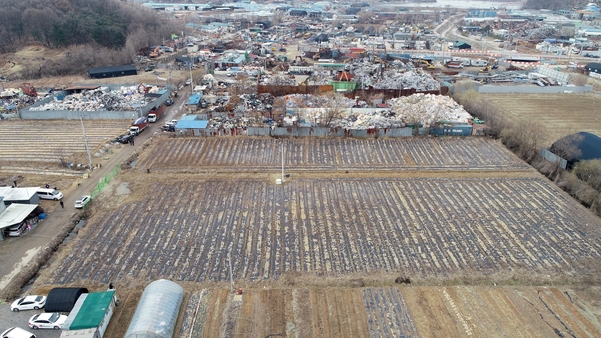Input 2021.03.07 09:58 | Revision 2021.03.07 11:02
According to the results of Yonhap News’ analysis of the Korea Real Estate Agency statistical system on the 7th, the transaction volume of pure land (land excluding buildings) in Gwangmyeong was 893 lots in 2016, less than 1,000 lots, but ▲1036 lots in 2017 ▲2018 1665 lots ▲1715 lots in 2019 ▲2520 lots in 2020, then 2520 lots last year, the most since 2006 when related statistics were written. The transaction volume is a number that includes not only sales, but also gifts, exchanges, and judgments.

However, on the 24th of last month, LH employees, who were suspected of dumping land in Siheung District, Gwangmyeong, designated as the sixth new city, bought and sold land for the first time in a field in Okgil-dong, Gwangmyeong-si, in August 2017. At that time, the total pure land traded in Gwangmyeong City was 138 lots, and the transaction volume increased by 76.9% compared to the previous (78 lots).
It was investigated that a parent member of LH purchased additional rice fields in Mujinae-dong and Gwarim-dong, Siheung-si, respectively, in April 2018 and February 2020, following the fields in Okgil-dong, Gwangmyeong-si in August 2017. Considering the situation in which the land trading market in Gwangmyeong and Siheung has been in full swing since 2017, suspicion is raised that there has been systematic speculation beyond the individual deviation of LH employees.
2020 and 2017, when land transactions were the most in Gwangmyeong City and Siheung City, respectively, are the years that Seoul residents bought the most land in these regions, respectively. Seoul residents’ land transactions in Gwangmyeong-si were 702 lots last year, and Siheung-si land transactions were 2248 lots in 2017, the largest each year.
It is reported that many of the LH employees who bought land in Gwangmyeong Siheung District, who stood at the center of controversy, are residents of the Gangnam area of Seoul.
In terms of the share of Seoul residents in land transactions in Gwangmyeong and Siheung, both were the highest in 2018. It was the year the government announced that it would build a new city to expand the supply of housing in the metropolitan area.
In Gwangmyeong that year, 33.1% (551 lots) of Seoul residents accounted for 33.1% of the total land transaction volume of 1665 lots. In particular, in February (45.7%), March (42.3%), April (42.4%) and August (50.0%), the proportion of transactions in Gwangmyeong land by Seoul residents was exceptionally high.
In Siheung, Seoul residents accounted for 24.4% (1,980 lots) of 8111 lots of land traded in 2018. In March of that year, the proportion of Seoul citizens’ land transactions in Siheung soared to 31.2%, recording a monthly high.
Earlier, the government announced plans to create a new city in September 2018. Gwangmyeong Siheung District, which was designated as a Bogeumjari District and then redesignated as a special management area, was mentioned as the most promising candidate for a new city at the time.
